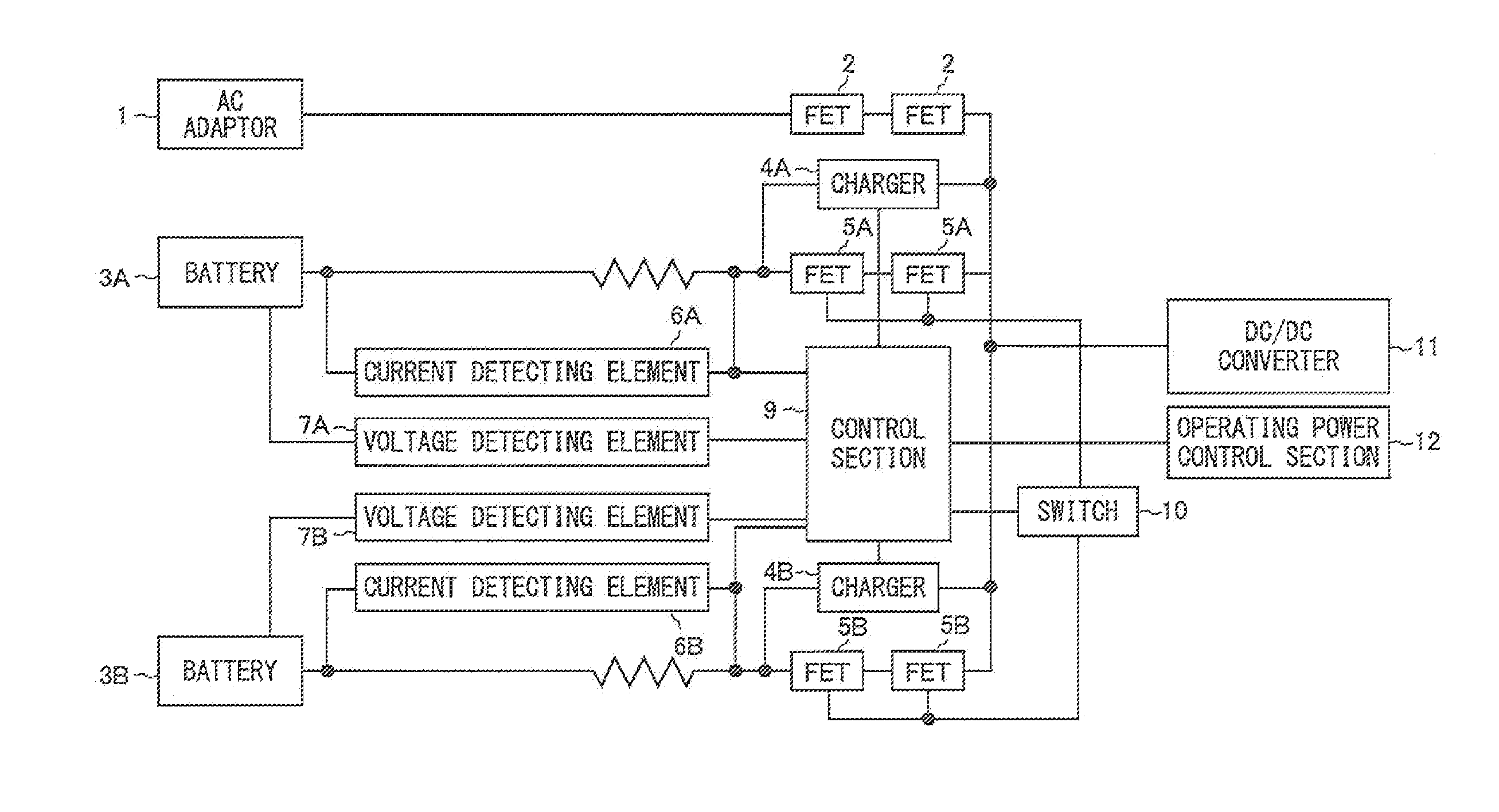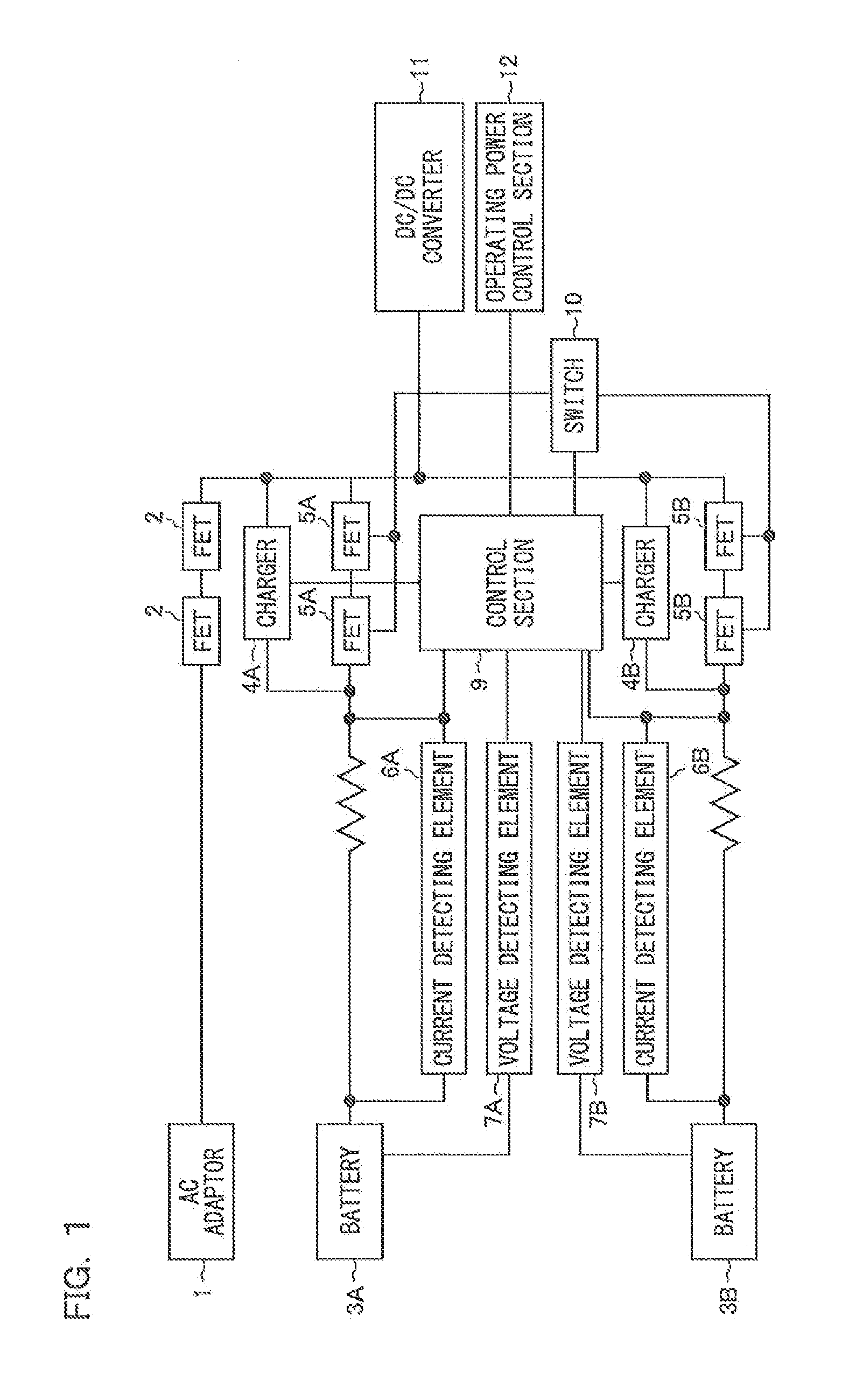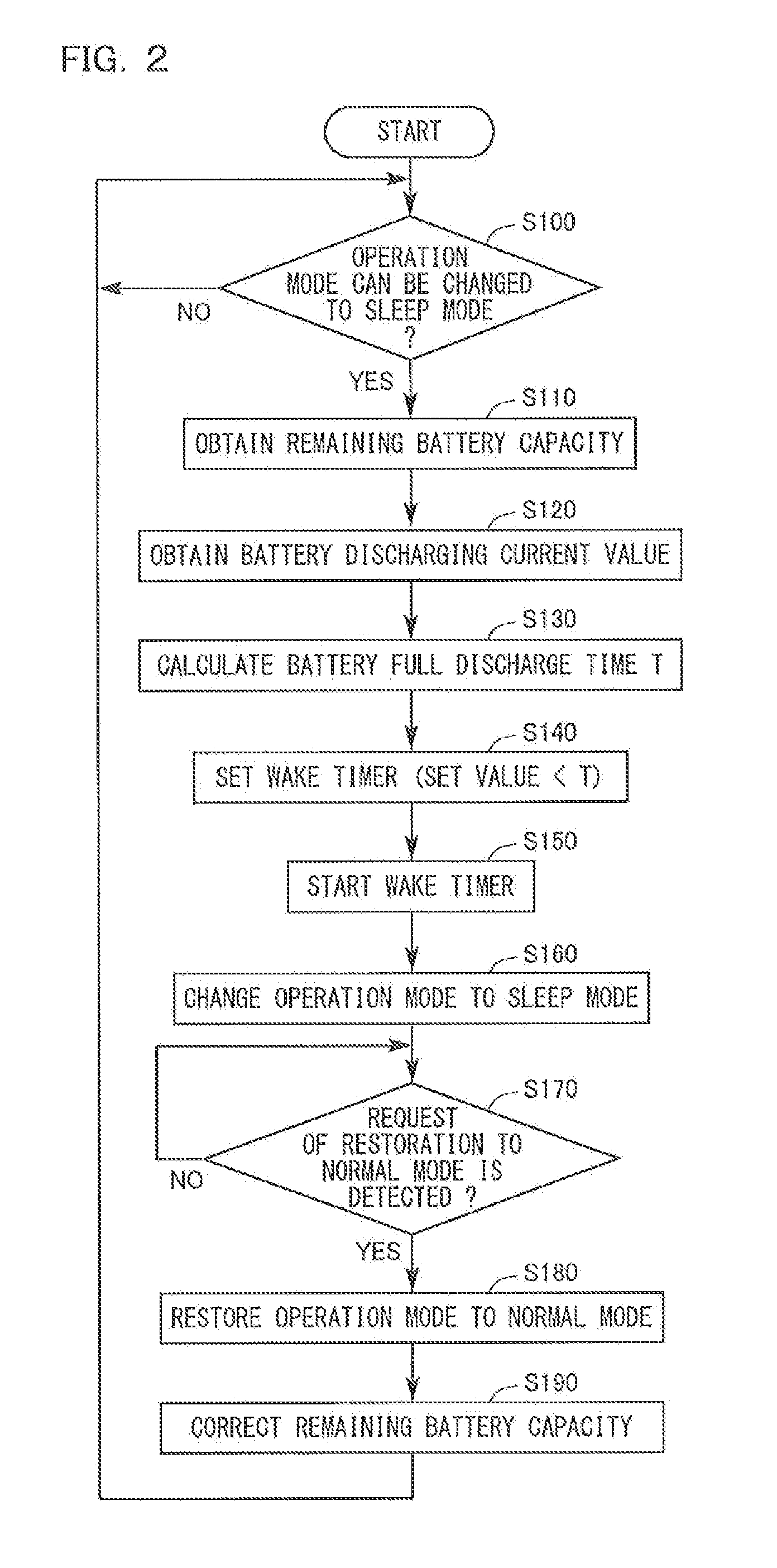Device and method for controlling secondary battery
a secondary battery and battery technology, applied in secondary cell servicing/maintenance, batteries, instruments, etc., can solve the problems of data loss, limited capacity of such a secondary battery, and inability to accurately calculate the remaining battery capacity, so as to accurately detect the remaining capacity of the secondary battery
- Summary
- Abstract
- Description
- Claims
- Application Information
AI Technical Summary
Benefits of technology
Problems solved by technology
Method used
Image
Examples
embodiment 1
[0024]Hereinafter, a battery control device according to Embodiment 1 of the present invention will be described with reference to FIGS. 1 to 4.
[0025](Structure)
[0026]FIG. 1 is a block diagram illustrating an exemplary schematic structure of the battery control device according to Embodiment 1. The battery control device controls two batteries incorporated in a notebook PC as an example of an electronic device. The battery control device of Embodiment 1 uses two batteries, i.e., a battery 3A as a first battery and a battery 3B as a second battery. These batteries have the same rating. However, the application of the present invention is not limited to a notebook PC having two batteries. The present invention is applicable to other electronic devices, such as PDAs (Personal Digital Assistances) and mobile phones, each having two batteries. In any case, the two batteries may have different ratings. The number of batteries may be one or more than two. Each of the batteries may be provi...
embodiment 2
[0063]Hereinafter, a battery control device according to Embodiment 2 of the present invention will be described with reference to FIGS. 5 and 6. In the following description, the description of the same components as those of Embodiment 1 is not repeated. It should be noted that the battery control device according to Embodiment 2 controls two or more batteries.
[0064]The hardware structure of the battery control device according to Embodiment 2 is identical to that shown in FIG. 1. In this embodiment, the control section 9 executes a battery switching process, in addition to the remaining battery capacity detecting process described for Embodiment 1. The control flow of the battery switching process will be described with reference to FIG. 5. The processes at S100 to S190 in FIG. 5 are identical to those in FIG. 2.
[0065]In S200, the control section 9 determines whether the remaining battery capacity is lower than a switching threshold. When it is determined that the remaining batte...
PUM
 Login to View More
Login to View More Abstract
Description
Claims
Application Information
 Login to View More
Login to View More - R&D
- Intellectual Property
- Life Sciences
- Materials
- Tech Scout
- Unparalleled Data Quality
- Higher Quality Content
- 60% Fewer Hallucinations
Browse by: Latest US Patents, China's latest patents, Technical Efficacy Thesaurus, Application Domain, Technology Topic, Popular Technical Reports.
© 2025 PatSnap. All rights reserved.Legal|Privacy policy|Modern Slavery Act Transparency Statement|Sitemap|About US| Contact US: help@patsnap.com



